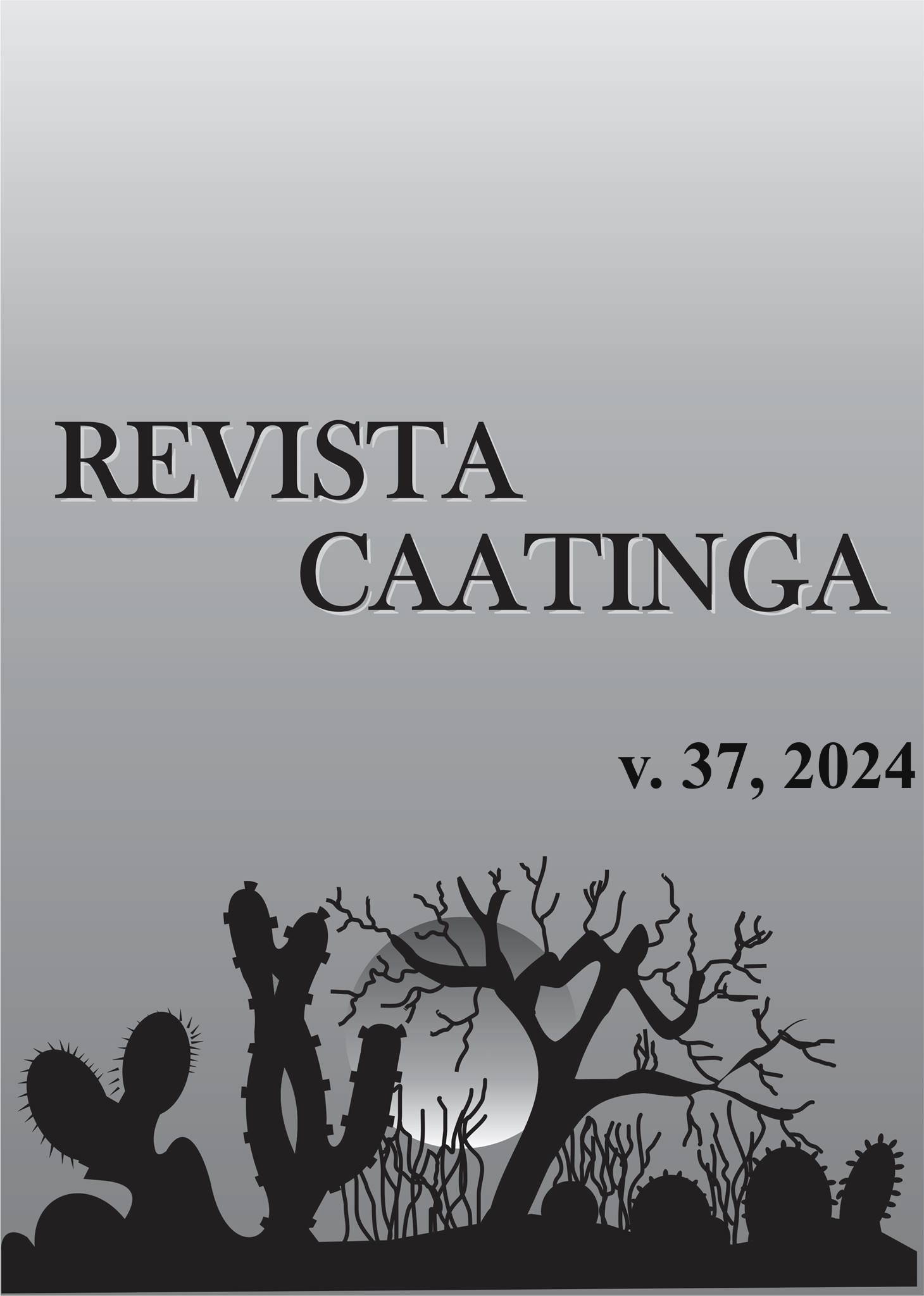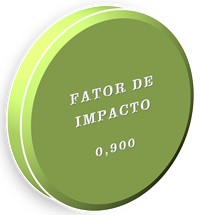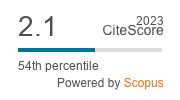Mutação Try574 conferindo resistência cruzada a herbicidas inibidores da ALS em nabiça
DOI:
https://doi.org/10.1590/1983-21252024v3711974rcPalavras-chave:
Polimorfismo de nucleotídio simples. Raphanus raphanistrum. Trigo. Controle de plantas daninhas.Resumo
A caracterização da resistência de plantas daninhas a herbicidas, bem como os estudos sobre os mecanismos de resistência e as alternativas para o controle químico são fundamentais para o manejo de plantas daninhas resistentes a herbicidas. Desta forma, este trabalho teve como objetivo reportar e elucidar o mecanismo de resistência de um biótipo de Raphanus raphanistrum a inibidores da acetolactato-sintase (ALS). Foram desenvolvidos trabalhos de dose resposta, sequenciamento do gene ALS, verificação de metabolização e alternativas para o controle químico. Ocorreu baixa eficiência de controle de herbicidas inibidores de ALS a esse biótipo, sendo confirmada a resistência cruzada. O sequenciamento gene ALS demostrou que o biótipo apresentou a mutação Try-574-Leu, já reportada na literatura e que confere resistência cruzada a este mecanismo de ação. O ensaio para verificação de metabolização provou que esse mecanismo não está envolvido na resistência. Já o estudo de controle químico indicou que existem alternativas para o controle do biótipo resistente. Conclui-se que o biótipo de nabiça apresentou resistência cruzada aos herbicidas inibidores de ALS, com a mutação Try-574-Leu na enzima alvo e que herbicidas de outros mecanismos de ação promovem elevada eficiência de controle.
Downloads
Referências
AGOSTINETTO, D. et al. Changes in photosynthesis and oxidative stress in wheat plants submitted to herbicides application. Planta Daninha, 34: 1-9, 2016.
ASSUNÇÃO, N. S. et al. Seletividade do flumioxazin ao trigo. Revista Brasileira de Herbicidas, 16: 122-129, 2017.
BECKIE, H. J.; BUSI, R.; ZHANG, B. Multiple resistant wild radish. Weed Science, 52: 152-157, 2020.
CECHIN, J. et al. Mutation of Trp-574-Leu ALS gene confers resistance of radish biotypes to iodosulfuron and imazethapyr herbicides. Acta Scientiarum Agronomy, 39: 299-306, 2017.
COSTA, L. O.; RIZZARDI, M. A. Resistance of Raphanus raphanistrum to the herbicide metsulfuron-methyl. Planta Daninha, 32: 181-187, 2014.
COSTA, L. O. et al. Target‐site resistance and cross‐resistance to ALS‐inhibiting herbicides in radish and wild radish biotypes from Brazil. Agronomy Journal, 113: 236-249, 2021.
DÉLYE, C. Unravelling the genetic bases of non-target-site-based resistance (NTSR) to herbicides: a major challenge for weed science in the forthcoming decade. Pest Management Science, 69: 176-187, 2012.
FORLANI, G. et al. Chlorsulfuron tolerance and acetolactate synthase activity in corn (Zea mays L.) inbred lines. Weed Science, 39: 553-557, 1991.
HAN, H. et al. A novel amino acid substitution Ala-122-Tyr in ALS confers high-level and broad resistance across ALS-inhibiting herbicides. Pest Management Science, 68: 1164-1170, 2012.
HEAP, I. The International Herbicide-Resistant Weed Database. Disponível em: . Acesso em: 30 ago. 2023.
LU, H. et al. Non‐target‐site resistance to PDS‐inhibiting herbicides in a wild radish (Raphanus raphanistrum) population. Pest Management Science, 76: 2015-2020, 2020a.
LU, H. et al. Evolution of resistance to HPPD‐inhibiting herbicides in a wild radish population via enhanced herbicide metabolism. Pest Management Science, 76: 1929-1937, 2020b.
MALDANER, R. L.; SCHENEIDER, T. Seletividade do herbicida saflufenacil ao trigo. Ciência e Tecnologia, 3: 47-54, 2019.
MENDES, R. R. et al. A Trp574Leu target-site mutation confers imazamox resistance in multiple herbicide-resistant wild poinsettia populations from Brazil. Agronomy, 10: 1057, 2020.
MURPHY, B. P.; TRANEL, P. J. Target-site mutations conferring herbicide resistance. Plants, 8: 382, 2019.
OWEN, M. J.; MARTINEZ, N. J.; POWLES, S. B. Multiple herbicide-resistant wild radish (Raphanus raphanistrum) populations dominate Western Australian cropping fields. Crop and Pasture Science, 66: 1079-1085, 2015.
PIASECKI, C. et al. Seletividade de associações e doses de herbicidas em pós-emergência do trigo. Revista Brasileira de Herbicidas, 16: 286-295, 2017.
POWLES, S. B.; YU, Q. Evolution in action: plants resistant to herbicides. Annual Review of Plant Biology, 61: 317-347, 2010.
SINGH, S. et al. Target-site mutation accumulation among ALS-inhibitor-resistant palmer amaranth. Pest Management Science, 75: 1131-1139, 2019.
SCHMITZ, M. F. et al. Uso de clomazone associado ao safener dietholate para o manejo de plantas daninhas na cultura do trigo. Revista de Ciências Agroveterinárias, 17: 2-11, 2018.
TAN, M. K.; MEDD, R. W. Characterization of the acetolactato synthase (ALS) gene of Raphanus raphanistrum L. and the molecular assay of mutations associated with herbicide resistance. Plant Science, 163: 195-205, 2002.
TRANEL, P. J.; WRIGHT, T. R. Resistance of weeds to ALS-inhibiting herbicides: what have we learned? Weed Science, 50: 700-712, 2002.
TRANEL, P. J.; WRIGHT, T. R.; HEAP, I. M. Mutations in herbicide-resistant weeds to ALS inhibitors. Disponível em: <http://www.weedscience.com>. Acesso em: 12 mar. 2021.
VARANASI, V. K.; BRABHAM, C.; NORSWORTHY, J. K. Confirmation and characterization of non–target site resistance to fomesafen in palmer amaranth (Amaranthus palmeri). Weed Science, 66: 702-709, 2018.
VELDHUIS, L. J. et al. Metabolism-based resistance of a wild mustard (Sinapis arvensis L.) biotype to ethametsulfuron-methyl. Journal of Agricultural and Food Chemistry, 48: 2986-2990, 2011.
WALSH, M. J. et al. Multiple-herbicide resistance across four modes of action in wild radish (Raphanus raphanistrum). Weed Science, 52: 8-13, 2004.
YU, Q. et al. Resistance evaluation for herbicide resistance-endowing acetolactate synthase (ALS) gene mutations using Raphanus raphanistrum populations homozygous for specific ALS mutations. Weed Research, 52: 178-186, 2012.
YU, Q.; POWLES, S. B. Resistance to AHAS inhibitor herbicides: current understanding. Pest Management Science, 70: 1340-1350, 2014.
YU, Q. et al. ALS gene proline (197) mutations confer ALS herbicide resistance in eight separated wild radish (Raphanus raphanistrum) populations. Weed Science, 51: 831-838, 2003.
ZEINEB, H. et al. Point mutations as main resistance mechanism together with P450-based metabolism confer broad resistance to different ALS-inhibiting herbicides in Glebionis coronaria from Tunisia. Frontiers in Plant Science, 12: 1-12, 2021.
Downloads
Publicado
Edição
Seção
Licença
Os Autores que publicam na Revista Caatinga concordam com os seguintes termos:
a) Os Autores mantêm os direitos autorais e concedem à revista o direito de primeira publicação, com o trabalho simultaneamente licenciado sob a Licença Creative Commons do tipo atribuição CC-BY, para todo o conteúdo do periódico, exceto onde estiver identificado, que permite o compartilhamento do trabalho com reconhecimento da autoria e publicação inicial nesta revista, sem fins comerciais.
b) Os Autores têm autorização para distribuição não-exclusiva da versão do trabalho publicada nesta revista (ex.: publicar em repositório institucional ou como capítulo de livro), com reconhecimento de autoria e publicação inicial nesta revista.
c) Os Autores têm permissão e são estimulados a publicar e distribuir seu trabalho online (ex.: em repositórios institucionais ou na sua página pessoal) a qualquer ponto antes ou durante o processo editorial, já que isso pode gerar alterações produtivas, bem como aumentar o impacto e a citação do trabalho publicado (Veja O Efeito do Acesso Livre).







